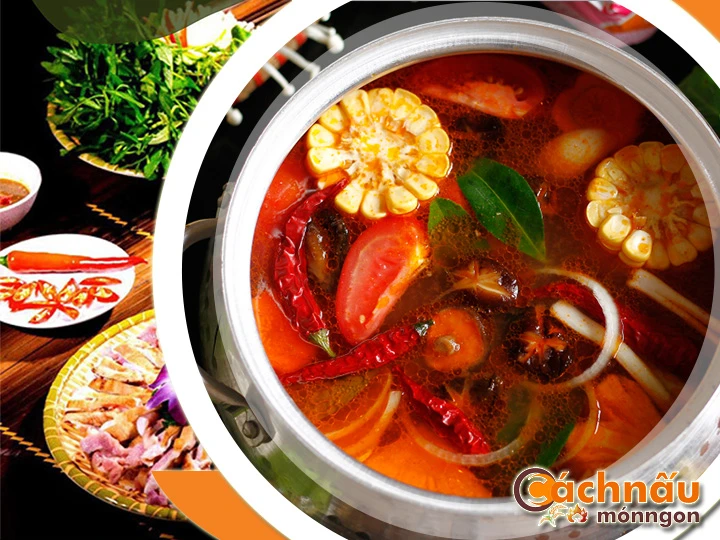Explore the Traditional Rabbit Hot Pot Guide to Enjoy - Lẩu thỏ
Explore the Traditional Rabbit Hot Pot Guide to Enjoy - Lẩu thỏ
Blog Article
Rabbit hot pot, a scrumptious and ethnic specialty, has been treasured across different food cultures for centuries.
This comprehensive guide explores the entirety you need to realize about rabbit hot pot, from its ancient origins to contemporary twists, dietary perks, and easy-to-follow steps for creating the ultimate plate at home. Whether you are a skilled chef or a inquisitive newcomer, this guide will support and train you to refine your talent of rabbit hot pot.

UNDERSTANDING THE BACKGROUND AS WELL AS TRADITIONS CENTERED AROUND RABBIT HOT POT.
Rabbit hot pot stands as a unique and time-honored dish with profound cultural connections in various regions. Its popularity stems not only from its delicious flavor but also from its heritage and meaning.
1. The Origins of Rabbit stew.
- The Start: Stewed rabbit was first made in farming communities where wild hares were a prevalent, nourishing food source. In traditional Chinese culture, it was a household staple, particularly during important events.
- Becoming a Global Favorite: In European nations like Belgium, rabbit was commonly found in savory recipes, transforming into modern versions of global stews as the dish became internationally recognized.
2. Rabbit Casserole integral to Eastern Heritage.
- Across China: Known as the traditional rabbit hot pot, rabbit hot pot is an essential part of spicy Sichuan cuisine, recognized for its robust flavors and loved during festive occasions.
- Korea and Japan: While less common, rabbit hot pot is sometimes made as a health-focused recipe in the Korean Peninsula, or taking cues from Japanese nabemono in Japanese cuisine, highlighting local vegetables and herbs.
- Vietnam: Although rabbit hot pot is not a regular meal, it is recognized during important celebrations or in rural areas where rabbit meat is abundant. It is often cooked with distinctive spices such as lemongrass, fresh ginger, and spicy chili, paired with fresh vegetables like swamp cabbage, mustard leaves, or neptunia leaves. This dish is loved for its one-of-a-kind flavor and dietary value, frequently eaten at special moments with close ones.
Trong văn hóa Việt Nam, tuy không được xem là món ăn đại trà từng ngày, nhưng nổi bật trong những dịp đáng nhớ hoặc ở những miền quê, nơi dễ dàng tìm thấy thỏ. Thường được kết hợp với gia vị đặc trưng như sả, vị cay từ gừng, và ớt tươi, kết hợp với rau sống khác. Món ăn này rất phổ biến nhờ hương vị độc đáo và tính bổ dưỡng, thường buổi gặp mặt ấm cúng.
3. Rabbit Hot Pot integral to European Culinary Traditions.
- In France: Typically cooked as a savory meal with wine reduction, seasoning herbs like rosemary, and earthy roots. Rabbit hot pot is a time-honored dish for festive feasts.
- Within Italy: The dish referred to as “Cacciatore”, featuring rabbit braised in tomatoes and wine, is a inspiration for rabbit hot pot dishes.
RECIPES AND TECHNIQUES FOR COOKING RABBIT HOT POT
Rabbit hot pot is a versatile dish that merges seasonal ingredients, flavorful broths, and specialized methods to create a filling and flavorful experience. Below are essential tips into the core recipes and strategies to master rabbit hot pot.
The Fundamental Recipe for Rabbit Hot Pot
* Required Ingredients:
- 1 whole rabbit (sectioned)
- 4 cups of broth (chicken)
- Vegetables (mushrooms)
- Spices and herbs (garlic)
- Seasonings (chili paste)
- Optional: side dishes for serving
* Cooking Instructions:
- Prepare the Rabbit: Wash and section the rabbit into pieces. Prepare with salt, pepper, and a drizzle of soy sauce for 30 minutes to boost the flavor.
- Create the Broth: Heat a pan with a touch of oil. Sauté minced garlic and sliced ginger until aromatic. Add your preferred broth and bring it to a boil.
- Add the Rabbit: Add the rabbit pieces into the pot and let them cook slowly on a low flame for 30-40 minutes until cooked through.
- Incorporate Vegetables: Add your chosen vegetables and cook until they are tender but still fresh-looking.
- Present: Transfer the hot pot to a large bowl. Serve with side dishes and add-ons such as rice or noodles.
Mastering Rabbit Hot Pot Techniques
- Seasoning:
. Marinate the rabbit with a mixture of salt, pepper, and spices to intensify its natural flavor.
. For more depth, use wine, soy sauce, or a mix of fresh herbs like rosemary and thyme.
- Adding Ingredients Strategically:
. Start by simmering the rabbit in the broth to draw out its savory taste.
. Introduce vegetables step by step based on their cooking times.
- Optimal Cooking Duration:
. Avoid cooking too long the rabbit, as it can become tough.
. Test for readiness by checking if the meat falls off the bone.
- Broth Adjustments:
. Adjust the broth by adding additional seasonings as needed.
. Experiment with different types of broths, such as creamy European-inspired lẩu thịt thỏ variations.
Pro Tips for Rabbit Hot Pot
- Quality Matters: Always choose locally sourced rabbit and in-season greens for the best results.
- Balance Flavors: Be attentive of the spiciness in the broth. Taste and tweak frequently during cooking.
- Sauce Pairings: Offer a variety of sauces like spicy garlic dip or soy-based dips to elevate the dining experience.
- Visual Appeal: Use a communal pot or serve the hot pot as a focal point to promote sharing.
With mastery of these recipes and techniques, you can prepare a rabbit hot pot that’s delicious and attractive, turning it into a standout dish for any occasion or event. Report this page